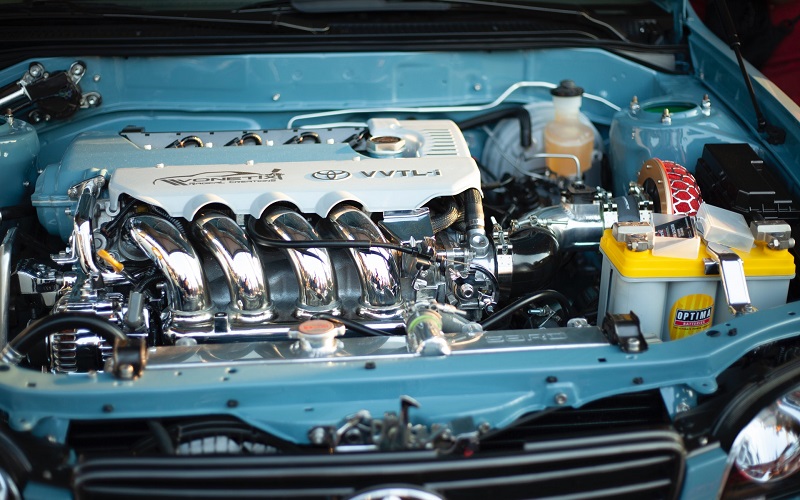A car with a clean exterior may look like it runs on a perfectly clean engine. But does it really? With constant usage, the engine accumulates oil, dirt, and grime that makes it run at a higher temperature than normal. This raised temperature will eventually ruin the engine. The most effective way to remove accumulated dirt is to degrease a car engine. How is this done? Here is a step-by-step guide.
How to Degrease a Car Engine
Gather Materials
Make sure that you have everything you need before starting. For engine degreasing that you can easily do at home, you will need:
- Solvent-based or Water-based Degreaser
- Hose
- Steel brush
- Plastic Wrap or Aluminum foil
- Automotive masking tape
- Cloth or towel for drying
- Goggles
- Gloves
Prep Work
Before working on your engine, cover sensitive electrical parts with plastic wrap or aluminum foil and seal it with tape. Doing so protects the parts from getting in contact with the degreaser and water. Read product instructions carefully and follow the safety guidelines and recommendations for usage. If your car engine is on, shut it off and let it cool down. Pouring cold water on a hot running engine will damage the metal and cause serious damage later on. Applying engine cleaners on a warm engine loosens the grease and makes cleaning easier.
Step 1: Initial Rinse
Loose dirt and small objects like leaves can make their way into the engine bay. Pick out the larger pieces and spray water to remove dirt.
Step 2: Apply Degreaser
Decide whether to use a solvent-based degreaser or a water-based degreaser. A solvent-based degreaser works effectively but usually has a stronger smell. It cannot be used on rubber components in your engine. Water-based degreasers are safe for both the environment and our health. They are safe to apply even without safety gear. This type of degreaser does not have negative effects on rubber or plastic.
Carefully aim and spray the product on the engine parts that need cleaning. Spray from top to bottom for a complete surface cleaning. Apply more layers on extra greasy areas. Avoid painted parts of the car to prevent damage. If you accidentally spray on a painted surface, wash it off quickly with water.
Step 3: Soak
Soaking is when the degreaser eats away the oil build-up. Allow the degreaser to soak according to the product’s specifications. Do not let it dry out. Usually, light to moderate dirt should be soaked for 3 minutes while heavy grease and grime should be soaked for 5 minutes to thoroughly remove all the stuck dirt and debris.
Step 4: Brush Away Grime
Wear goggles and gloves to avoid getting chemicals in your eyes and on your skin. Using a steel brush, scrub off unusually large amounts of grime, grease, and oil. Minimal grime build-up does not require scrubbing as the degreaser is enough to loosen up gunk.
Step 5: Rinse
Rinse the engine with a low-pressure water stream. Rinsing with a high-pressure nozzle will force water into the crevices of the engine which may destroy plastic-covered wires and other important electrical connections. Most of the dirt is expected to come off with the water. But if it still looks dirty, reapply degreaser and repeat the steps as necessary.
Step 6: Wipe and Dry
Wipe the engine dry with a cloth or towel. Remove remaining moisture by letting it air dry or by using a dryer. Set the dryer to low. Too much air pressure forces water particles into the openings of your engine.
Step 7: Start Engine
Once the engine has dried, remove the plastic that was used to cover the wirings. Turn the engine on and leave it for a few minutes until it becomes hot enough to dry the hard-to-reach areas like nooks and crannies.
Post-degreasing
Clean the rest of your engine bay. Steam cleaning the engine will remove any trace of degreaser. Check for any oil leaks that may be causing grime build up in the engine.
Degreasing your car’s engine has never sounded this simple but DetailXPerts will make it even easier for you. Our highly-trained car detailers will provide expert care tailor-fitted to your car’s needs. Schedule an appointment today to have your car’s engine professionally cleaned.





